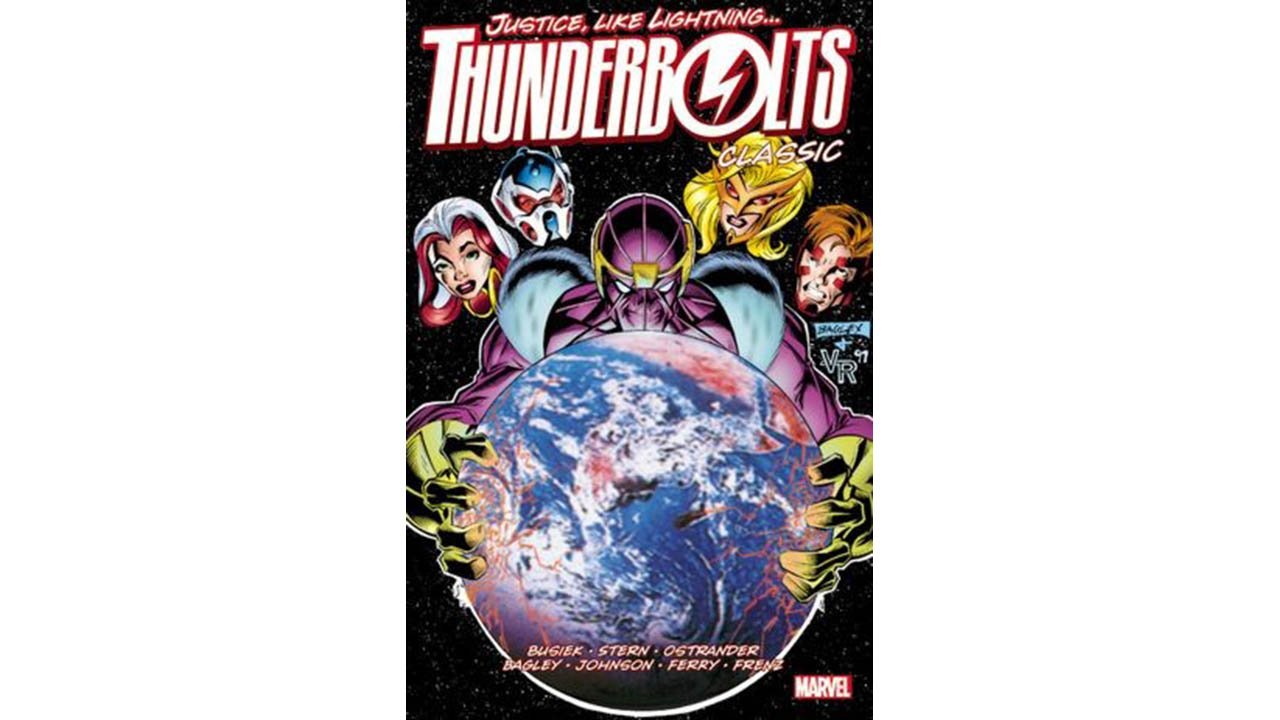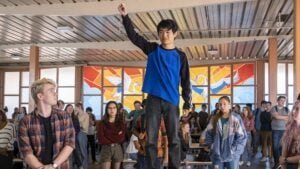This volume is the newest instalment in the Thunderbolts Classic line of trade paperbacks, chronicling the adventures of the original Thunderbolts team. This volume is the first to collect issues that haven’t been collected previously, encompassing Thunderbolts #6-14, plus Heroes for Hire #7. The first phase of the Thunderbolts book comes to a close in this volume, as issue #12 ended the original premise of the book, which Busiek took in new directions from issue #13 forwards. This collection doesn’t end with issue #12, however, instead including the two-parter which ran in isssues #13-14, setting up Thunderbolts Classic Volume 3 to showcase the new direction for the team which started in issue #15.
The Thunderbolts’ original concept was that they were the Masters of Evil in disguise, pretending to be heroes in a world that recently lost the Avengers and Fantastic Four during the Onslaught debacle. Taking the place of those lost heroes, they aimed to weasel their way into the hearts and minds of their adoring public, get access to secret files held by the Avengers, as well as high-ranking security clearances, and then they would turn on the world, and take it over, once their deception was complete and had run its course. This volume showcases how their plan actually ended up going down, as the majority of the Thunderbolts start to enjoy being heroes, instead of being villains on the run. The team takes on the Super-Adaptoid, with the help of the Heroes for Hire, and also take on the Elements of Doom, which results in a huge status quo change for one of their teammates. The Black Widow guest-stars, to reveal to Mach-1 and Songbird that she knows of their deception, although she hasn’t yet figured out who their leader is, nor their aims, but she tells them a story regarding Hawkeye, Quicksilver and Scarlet Witch’s decision to become Avengers, to try and get them to flip on Baron Zemo, their leader. This culminates in Baron Zemo himself leaking their identities to the authorities, putting the team on the run, as they try to enslave the Earth using sophisticated technology. The story reaches its conclusion when the team rebels against Baron Zemo, is able to thwart his plan, and save the newly returned Fantastic Four and Avengers from Zemo’s enslavement. However, before anything else can happen, the team is spirited away from Earth and into another dimension, for a quick two-parter, before returning to Earth, unsure of where to go from here, whether they should stick together or not, and whether they’ll still be viewed as villains, or could actually go back to being heroes.
Kurt Busiek is a talented writer, and although there are definitely aspects of his writing which feel very dated and late-90s, particularly the method by which Baron Zemo takes control of various military organizations, etc, on the whole he does a good job capturing the turmoil felt by the Thunderbolts as they start to get used to the whole concept of being heroes instead of villains. Busiek seized upon something very interesting in the concept, considering that Black Widow, Scarlet Witch, Quicksilver and Hawkeye all started out as villains, and watching the Thunderbolts grow into multi-faceted characters is very entertaining. As a long-time fan of the series, I especially enjoy seeing just how far the characters have come since these early days, and am excited at the issues that are ahead in future Thunderbolts Classic volumes. Busiek developed this cast quite well, and made the reader very invested in their adventures, and what the future held in store for them. This book was a true sleeper hit in its time, coming off the major revelation at the end of issue #1 that the team was in fact the Masters of Evil. This series made old characters that weren’t all that interesting, such as Screaming Mimi, the Beetle and Goliath, into fleshed out characters that fans cared about, in the form of Songbird, Mach-1 and Atlas. Busiek also did a fantastic job with Baron Zemo, reviving the character and really making him something special, laying the groundwork for future Thunderbolts writer Fabian Nicieza to really take Zemo’s character to new, entertaining places.
The majority of the artwork in this volume is done by Mark Bagley, who really excelled at illustrating these characters’ struggles, and bringing them to life. After years of work on Amazing Spider-Man, Bagley was ready for a change, and he really does a terrific job on this book. He’s got a great artistic style, and there’s enough action to really keep the pencils hot during this volume. Plus, there’s a few appearances by Spider-Man, which only reminded me just how great a penciller he was on Spider-Man.
This is a great volume for fans who may have missed out on the Thunderbolts’ formative years in the late ‘90s, and are intrigued either by the concept, or the actual characters utilized here. The Thunderbolts have gone through a lot of changes throughout the years, not just the characters on the team but also the concept at the heart of the team, but this volume shows you where it all started, and how the original phase of the Thunderbolts concept ended, and a new one began.



